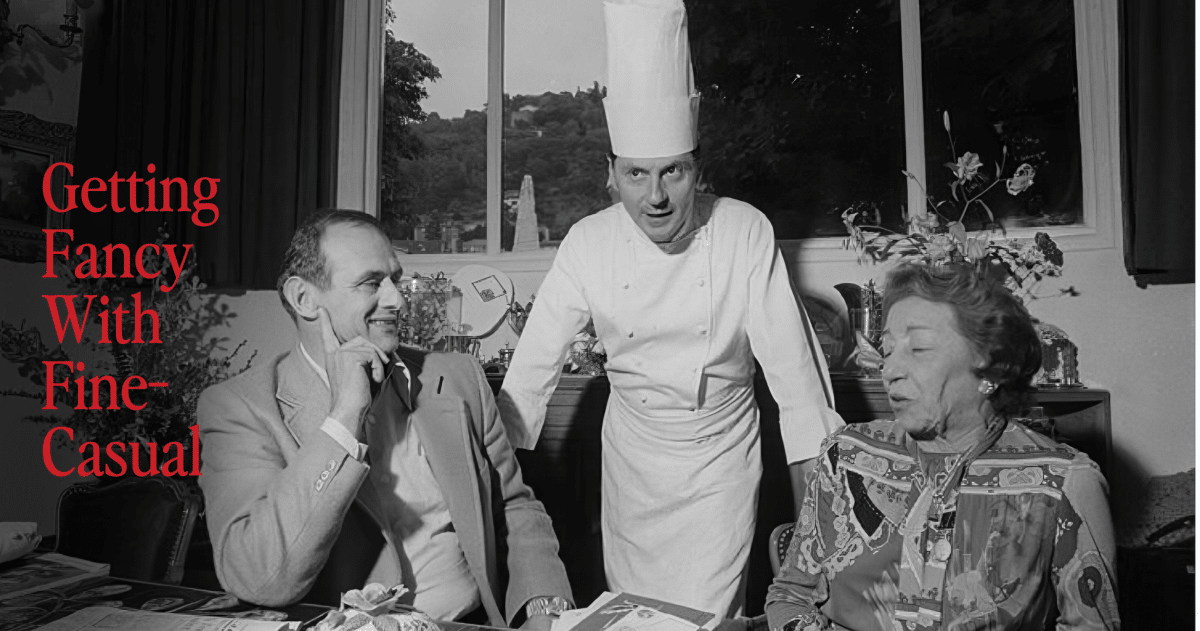September 26, 2024
The Rise of Fine Casual: Top 10 Reasons

As many top chefs step away from white tablecloths in favor of paper placemats, the line between fine and casual dining is blurring. This shift isn’t just about cutting costs—it reflects a change in consumer expectations for high-quality food in a more approachable setting. As a result, chefs are finding ways to blend luxury and convenience, creating dining experiences that feel both elevated and accessible.
As the global fast-casual restaurant market is projected to grow from $168.1 billion in 2023 to $301.6 billion by 2032, let’s look at the top 10 reasons for the this trend:
1. Craving excellence without the frills? Fine-casual fuses gourmet quality with laid-back vibes, making exceptional dining more approachable.
2. Fast food for foodies: Fine-casual ditches the wait—offering counter service and speedy experiences without sacrificing flavor.
3. Millennials want more than just a meal: Fine-casual taps into the modern desire for unique, unpretentious dining that delivers personality, not pomp.
4. Gourmet taste, wallet-friendly prices: Fine-casual bridges the gap, delivering high-end flavors at more digestible price points.
5. Smarter, leaner operations: With fewer staff and smaller spaces, fine-casual is a streamlined model built for efficiency without compromising quality.
6. Fresh, local, and chef-crafted: These restaurants cater to the health-conscious with menus that prioritize flavor, sustainability, and freshness.
7. Tech at the table: From mobile orders to seamless payments, fine-casual meets the tech-savvy expectations of today’s diners.
8. Fine dining? Take it to go! Fine-casual’s flexibility means whether you’re dining in, ordering out, or getting delivery, you’re covered.
9. Instagrammable bites: Designed to dazzle both taste buds and social feeds, fine-casual restaurants know how to make food look as good as it tastes.
10. Following the flavor migration: Fine-casual concepts are expanding into suburban areas, adapting to shifting demographics and preferences.
Leading the Charge: Inspiring Examples

Cafe Mado
What used to be the dinner-only, Michelin-starred Oxalis is now Cafe Mado: an all-day cafe with a lively open area. Offering takeout, baked goods, and a full-service menu, Cafe Mado embodies what fine-casual is all about.
Learn More
Mamahuhu
Owner of a Michelin-starred restaurant and the James Beard Foundation’s 2022 Best Chef in California, Chef Brandon Jew had a vision: combining the rich history and flavors of classic Chinese-American cuisine with a modern approach and a commitment to reasonable pricing.
Learn More
Chicken Scratch
Nate Hereford has a lengthy resume in fine dining. But after a variety of projects, he settled into opening his own fine casual restaurant, a rotisserie chicken concept. For him, it has to do with maintaining the same standards of fine dining within the structures of a concept built for the masses.

Fancypants
Fancypants is on a mission to “flip fine dining on its head” by offering an environment that prioritizes fun. The founders want to serve food that surprises and delights guests.
Learn MoreFine-casual dining is here to stay, offering a fresh approach to the way we experience gourmet food. This movement provides chefs with the opportunity to innovate in a new and growing space and shows us that great food doesn’t need to come with the formalities of fine dining.